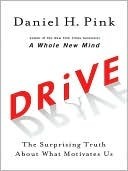More on this book
Community
Kindle Notes & Highlights
Read between
February 3 - February 6, 2022
“When money is used as an external reward for some activity, the subjects lose intrinsic interest for the activity,” he wrote.5 Rewards can deliver a short-term boost—just as a jolt of caffeine can keep you cranking for a few more hours. But the effect wears off—and, worse, can reduce a person’s longer-term motivation to continue the project.
“Nobody was expecting rewards would have a negative effect.”
Lakhani and Wolf uncovered a range of motives, but they found “that enjoyment-based intrinsic motivation, namely how creative a person feels when working on the project, is the strongest and most pervasive driver.”
Amabile calls it the intrinsic motivation principle of creativity, which holds, in part: “Intrinsic motivation is conducive to creativity; controlling extrinsic motivation is detrimental to creativity.”
Only contingent rewards—if you do this, then you’ll get that—had the negative effect. Why?
“When institutions—families, schools, businesses, and athletic teams, for example—focus on the short-term and opt for controlling people’s behavior,” they do considerable long-term damage.3
“People use rewards expecting to gain the benefit of increasing another person’s motivation and behavior, but in so doing, they often incur the unintentional and hidden cost of undermining that person’s intrinsic motivation toward the activity.”


